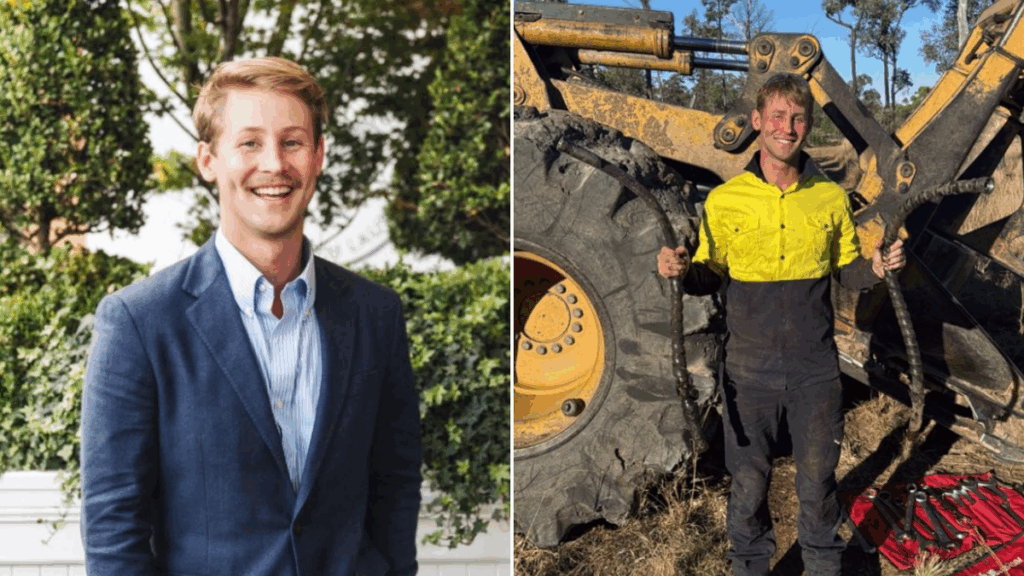
As rent, groceries, and bills continue to rise in major cities, a growing number of young adults are opting for a “financial gap year.” This trend sees them stepping away from the urban lifestyle of Sydney, Australia’s most expensive city, to reset their finances, reduce expenses, and rethink their priorities.
Tim Abbott, at 31, seemed to have it all figured out. With a steady job in Sydney’s digital marketing industry and a vibrant social life, he enjoyed the conveniences of city living. However, like many young Australians, he found himself financially stagnant. “I was earning decent money,” Abbott shared on TikTok. “But at the end of every month, I had nothing left. Rent, tolls, food, and commuting just drained it all.”
This frustration prompted Abbott to make a bold move: leaving the city for outback Queensland to embark on a financial gap year. He describes it as the best decision he’s ever made. “I’ve only been here for a short while, but I’m already able to make significant and meaningful savings because I’m not paying $40,000 a year to live in a sharehouse in Sydney.”
From City Life to Rural Savings
Abbott now resides hundreds of kilometers away from Brisbane in a remote part of Queensland, working on a farm. His new lifestyle is a stark contrast to city offices and Wi-Fi-equipped cafes. His days start at 5:30 am and involve logging trees and other outdoor labor. Despite the early hours and physical demands, Abbott isn’t complaining. His weekly rent has plummeted from $600 in Sydney to nearly nothing, as he now lives in a caravan.
“I’m having a lot of fun so far, and I’ve come here with absolutely zero experience,” he said. Groceries are simpler, fuel lasts longer, and there are no toll roads or tempting, expensive takeaway restaurants in sight. “Every month, I’m saving more than I ever could in the city,” he noted. “It’s easily 75 percent cheaper. I’m aiming to put away $100,000 in a year.”
A Growing Trend Among Young Australians
Abbott’s experience is far from unique. Across TikTok and other social media platforms, thousands of young Australians are sharing stories of stepping away from traditional career paths to take time off from high-cost cities and reduce expenses. The trend is supported by data from the June Quarter Regional Mover Index (RMI), which shows a 26 percent increase in people relocating from capital cities to regional areas compared to those moving in the opposite direction.
“Regional Australia is no longer a second choice – it’s the smart choice. From career opportunities to community connection, the regions are delivering,” said Liz Ritchie, CEO of the Regional Australia Institute (RAI).
Planning Your Own Financial Gap Year
For those considering leaving Sydney for a regional area, there are several important steps to take:
- Crunch the numbers: Calculate your total monthly costs in the city and compare them to a remote or regional setup, considering rent, transport, groceries, and healthcare.
- Have a savings goal: Whether it’s $20,000 or $100,000, having a target helps maintain motivation.
- Be realistic: Remote work may be physically demanding or offer less flexibility. Consider the distance from support systems, entertainment, or healthcare.
- Plan your return: Whether it’s six months or a year, think about job prospects, housing, and how the gap affects your long-term career path.
After two months in the outback, Abbott has no regrets. “I think 40-year-old Tim is going to thank 30-year-old Tim for taking the time to do this,” he reflected.
This movement towards financial gap years represents a significant shift in how young Australians approach their careers and financial futures. As living costs in urban centers continue to climb, the allure of regional Australia grows stronger, offering not just a reprieve from financial strain but also a chance to explore new opportunities and lifestyles.







